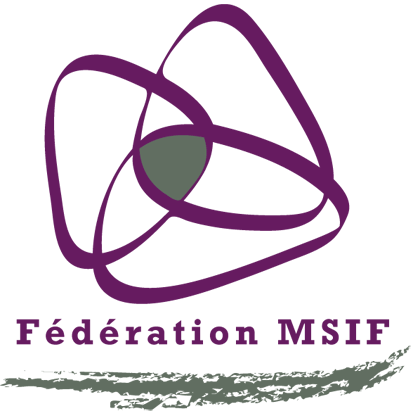Orateur
Dr
Claire Lesieur
(AGIM (Aging and Imaging), UGA-CNRS, Grenoble)
Description
Proteins are biological entities made of a chain of amino acids bound to one another in a specific sequence. Based on the sequence and the environment, the protein acquires a tridimensional shape called tertiary structure (3D-structure) suitable for its biological function. The vast majority of proteins are oligomers which assemble several copies of their chains in order to function. They either fold individual chains and subsequently associate them (lock and key mechanism) or fold and associate the chains concomitantly (fly-casting mechanism). The association of chains involves interactions between atoms of the amino acids of different chains to form a protein interface. Only some of the amino acids of the protein interface, so-called hot spots are regulating the association steps. In addition, there are some residues located outside the protein interface, often upstream, that regulate association [1, 2]. For example, a proline residue located upstream a protein interface domain changes the spatial position of the domain through a cis-trans isomerization and hence regulates the chain association [3]. The single modification of some of the amino acids of a protein is sufficient to (i) prevent assembly, (ii) modify assembly or (iii) change the route of assembly. At the same time, the mutation of most amino acids has no effect on the assembly. This implies that the protein combined fold/assembly robustness and fold/assembly plasticity through the regulation of local changes, namely single amino acid.
A network is a set of points (nodes) connected to one another by links. The strength of the network/graph theory is the capacity to yield information on the nodes, on the pairs of nodes (links) and on the dynamics of the network, ie the communication between nodes and more importantly beyond pairs of nodes.
We will discuss how such capacity is relevant to address protein fold robustness and plasticity [4, 5].
[1]. Csermely P. Creative elements: network-based predictions of active centres in proteins and cellular and social networks. Trends Biochem Sci. 2008 Dec;33(12):569-76. PubMed PMID: 18945619.
[2]. Zrimi J, Ng Ling A, Giri-Rachman Arifin E, Feverati G, Lesieur C. Cholera toxin B subunits assemble into pentamers - proposition of a fly-casting mechanism. PLoS One. 2010;5(12):e15347. PubMed PMID: 21203571.
[3]. Lesieur C, Cliff MJ, Carter R, James RF, Clarke AR, Hirst TR. A kinetic model of intermediate formation during assembly of cholera toxin B-subunit pentamers. J Biol Chem. 2002 May 10;277(19):16697-704. PubMed PMID: 11877421.
[4]. Feverati G, Achoch M, Vuillon L, Lesieur C. Intermolecular β-Strand Networks Avoid Hub Residues and Favor Low Interconnectedness: A Potential Protection Mechanism against Chain Dissociation upon Mutation. PloS one. 2014;9(4):e94745.
[5]. [4]. Lesieur C. The Assembly of Protein Oligomers: Old Stories and New Perspectives with Graph Theory. ISBN 980-953-307-1130-3. Book title: Oligomerization of Chemical and Biological Compounds, edited by Claire Lesieur, publised by INTECH; in press.
Auteur
Dr
Claire Lesieur
(AGIM (Aging and Imaging), UGA-CNRS, Grenoble)

